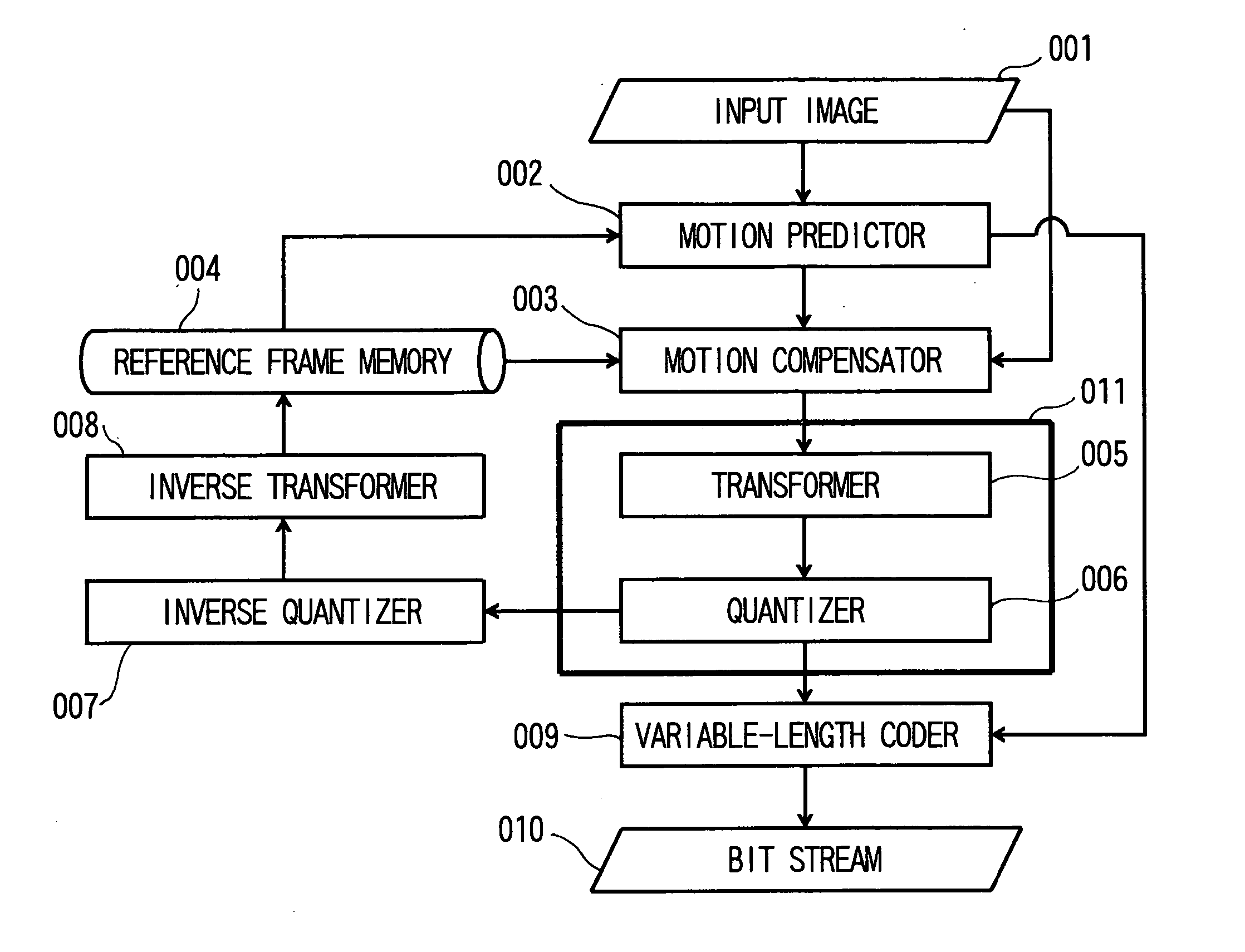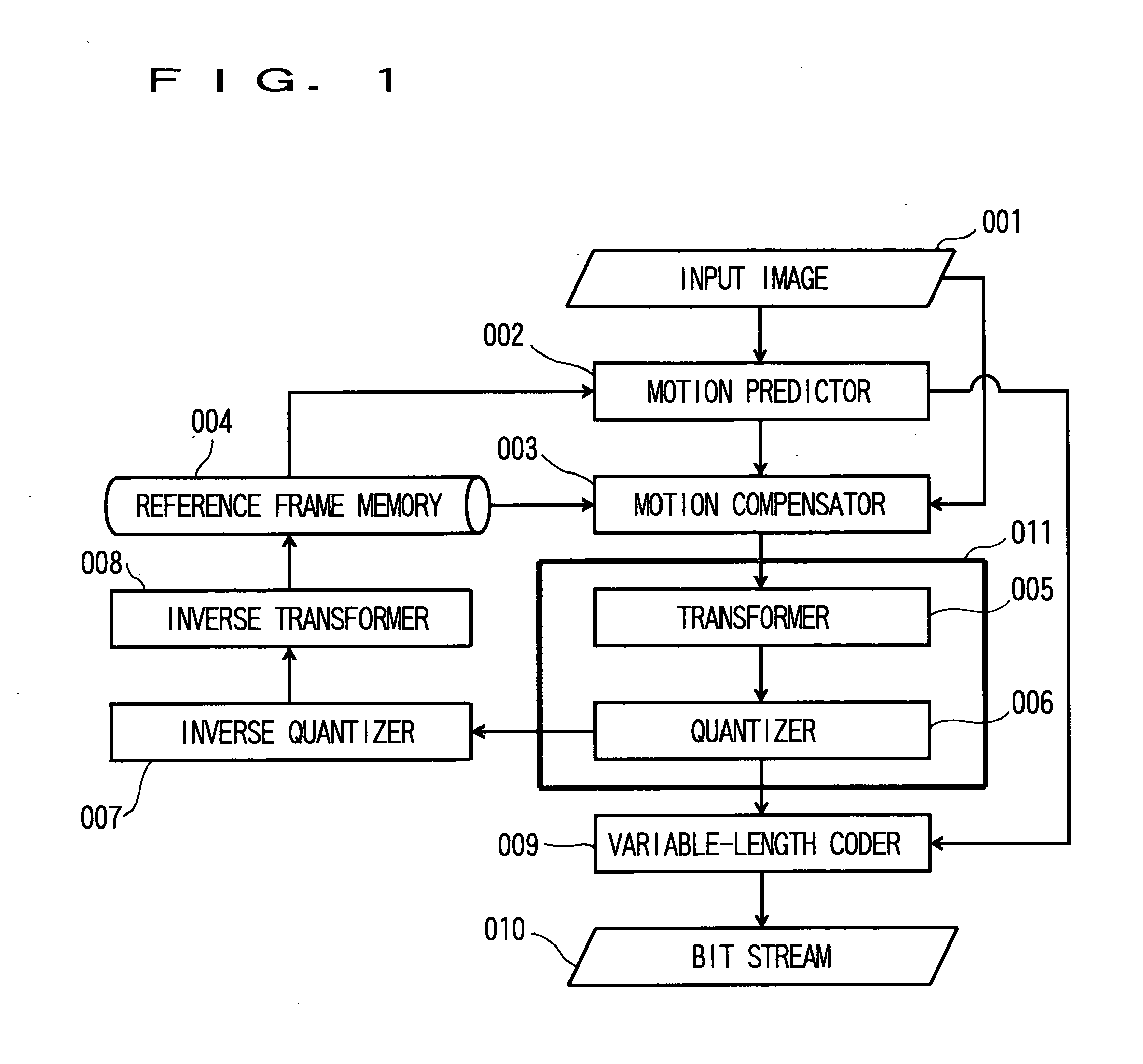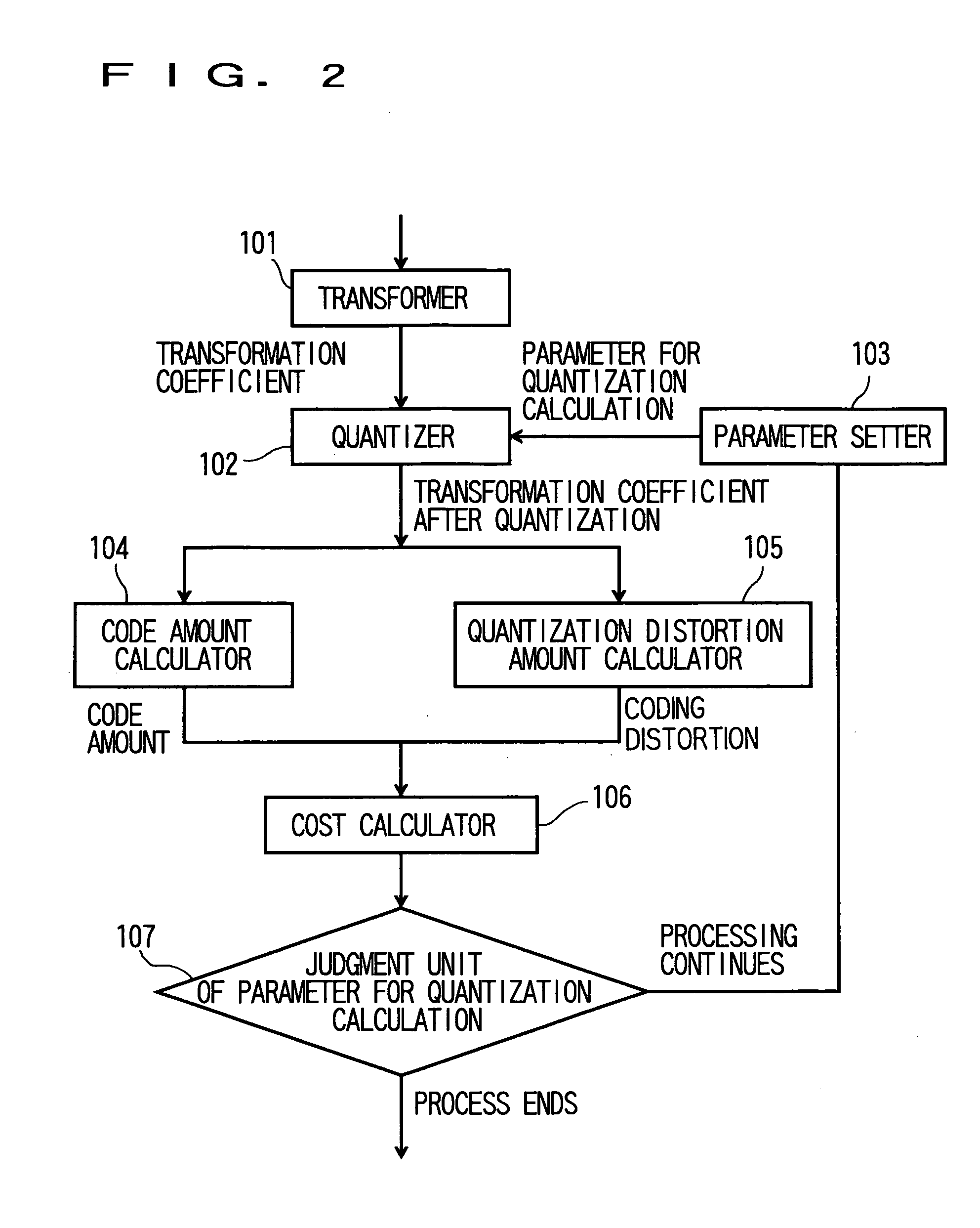Variable-length coding device and method of the same
a coding device and variable-length technology, applied in signal generators with optical-mechanical scanning, color television with bandwidth reduction, signal systems, etc., can solve the problems of low resolution and difficulty in uniquely determining offsets, and achieve the effect of improving coding efficiency
- Summary
- Abstract
- Description
- Claims
- Application Information
AI Technical Summary
Benefits of technology
Problems solved by technology
Method used
Image
Examples
first embodiment
(1) Processing Content of Moving Image Coding Device
[0023]FIG. 1 is a view schematically showing a processing flow of a moving image coding device according to a first embodiment of the invention. This moving image coding device adopts, for example, H.264. Incidentally, also in MPEG-1 / 2 / 4 and H.261 / 262 / 263 standardized by ISO or ITU-T, the coding processing is performed by a similar processing flow.
[0024] An input image 001 is inputted to a motion predictor 002 and a motion compensator 003.
[0025] In the motion predictor 002, motion vector detection is performed, and in the motion compensator 003, motion compensation is performed from the detected motion vector, and a residual signal relative to the input image is obtained.
[0026] The residual signal is transformed by a transformer 005, and is then quantized by a quantizer 006. This quantization processing will be described later in detail.
[0027] A transformation coefficient after the quantization and the motion vector detected ...
second embodiment
[0071] A second embodiment relating to a calculation method for the generated code amount R and the quantization distortion amount D is a method in which a calculating cost for coding is reduced.
[0072] A block 304 shown in FIG. 4 is the code amount calculator 104 in FIG. 2, and a block 305 shown in FIG. 4 is the quantization distortion amount calculator 105 in FIG. 2.
[0073] Since the calculating cost is increased when the generated code amount R and the quantization distortion amount D are accurately calculated, with respect to the generated code amount, in this embodiment, a method disclosed in Japanese Patent Application No. 2004-96763 is adopted in which rate distortion optimization based on the Lagrange s method of undetermined multipliers is realized at low calculating cost.
[0074] A transformation coefficient counter 306 is provided in the inside of the code amount calculator 304, and counts a value of a nonzero coefficient of the transformation coefficients after the quanti...
modified example
[0077] The invention is not limited to the above embodiments, but may be variously modified within the scope of its gist. Besides, various modifications or improvements can be added to the above embodiments.
[0078] For example, although H.264 is adopted in the embodiments, not to mention moving images of MPEG-1 / 2 / 4, even in the case where JPEG or JPEG2000 of still images is used, a similar effect can be obtained. The invention is not limited to H.264, but can be applied to systems of sound and others in addition to systems of only images, that is, all systems requiring quantization.
[0079] Besides, the description has been made especially with respect to the residual signal 4×4 in the quantization of H.264, the invention can be similarly applied to DC color difference 2×2, DC brightness 4×4, or residual signal 8×8.
PUM
 Login to View More
Login to View More Abstract
Description
Claims
Application Information
 Login to View More
Login to View More - R&D
- Intellectual Property
- Life Sciences
- Materials
- Tech Scout
- Unparalleled Data Quality
- Higher Quality Content
- 60% Fewer Hallucinations
Browse by: Latest US Patents, China's latest patents, Technical Efficacy Thesaurus, Application Domain, Technology Topic, Popular Technical Reports.
© 2025 PatSnap. All rights reserved.Legal|Privacy policy|Modern Slavery Act Transparency Statement|Sitemap|About US| Contact US: help@patsnap.com



